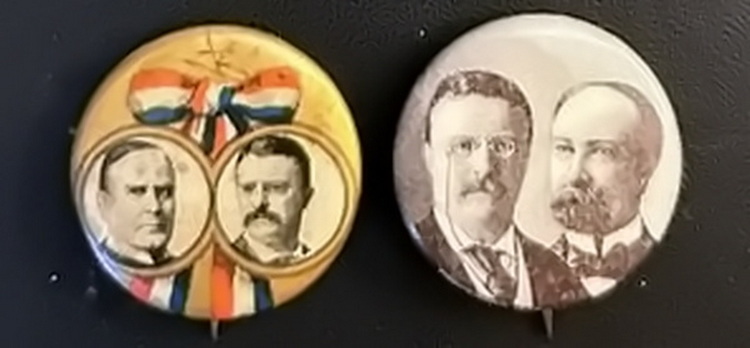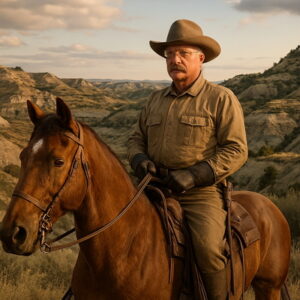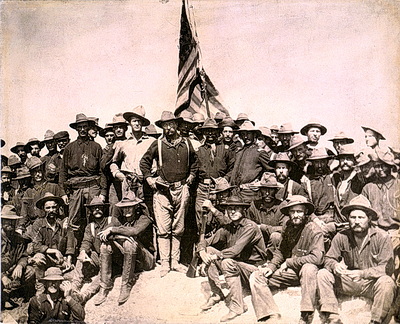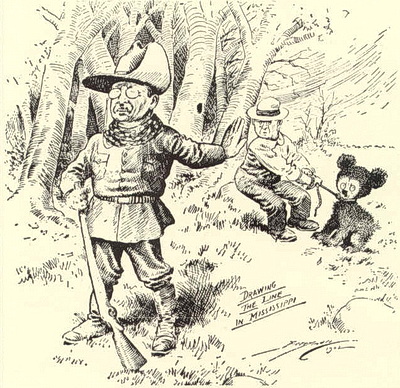
On September 6, 1901, newly minted Vice President Theodore Roosevelt was vacationing with his family in Vermont when he was notified that President William McKinley had been shot by an anarchist in Buffalo, New York, while attending the World’s Fair. Roosevelt immediately took a horse, a boat, a yacht, and a train to get from Vermont to Western New York.
During his travels, he was informed that although the injuries to the President were serious, prospects for a full recovery looked good. Had the medicine then been as advanced as it is today, McKinley would have indeed recovered. Unfortunately, this was not the case, and President McKinley succumbed to his wounds eight days later. Roosevelt was sworn in as the nation’s 26th President. Thus began one of the most significant eight years of leadership the United States would ever know.
A Traveling Man

Roosevelt loved the outdoors, and after his wife, Alice Hathaway Lee Roosevelt, died in 1884, the same day he lost his mother, he wanted a change. Like many people who had just experienced a family tragedy, he needed to escape. He left behind his political and personal life in New York to immerse himself in the rough, healing solitude of the American West. Roosevelt traveled to the Badlands of North Dakota and bought two cattle ranches there. He spent two years living as a cowboy, rancher, and a hunter. Roosevelt stated that this period away from home helped him recover emotionally and physically.
‘Rough Riders’ Fits Him Perfectly
 During the Spanish-American War in 1898, Roosevelt went to Cuba and played a key role as the leader of the Rough Riders, which was a volunteer cavalry unit. He successfully fought the Spanish in the Battle of San Juan Hill on July 1, 1898, where he led a daring charge up Kettle Hill. This victory helped the U.S. capture Santiago de Cuba, ultimately leading to Spain’s surrender and the war’s end.
During the Spanish-American War in 1898, Roosevelt went to Cuba and played a key role as the leader of the Rough Riders, which was a volunteer cavalry unit. He successfully fought the Spanish in the Battle of San Juan Hill on July 1, 1898, where he led a daring charge up Kettle Hill. This victory helped the U.S. capture Santiago de Cuba, ultimately leading to Spain’s surrender and the war’s end.
Roosevelt’s bravery and leadership made him a national hero and propelled him into politics. He became Governor of New York in 1899, Vice President in 1901, and then the 26th President of the United States in September 1901. His experience in Cuba also shaped his foreign policy, emphasizing military strength, and led to the famous statement, “Walk softly and carry a big stick,” officially known as the “Big Stick“ diplomacy.
I Will Not Shoot the Bear

During a bear hunt in Onward, Mississippi, with Mississippi’s Governor Andrew H. Longino in 1902, Roosevelt was annoyed that he could not locate a single bear. Aware of his frustration, Longino found one and tied it to a tree. He then called Roosevelt over to shoot it. Viewing this as a weakness and not worthy of a sportsman to shoot a vulnerable animal, Roosevelt flatly refused.
Word reached a Brooklyn, NY candy shop owner, Morris Michtom, who came up with the idea to build stuffed toys, which he, with approval from the president, called “Teddy Bears.” They were a hit, and Michtom began mass-producing them. To this day, we still buy Teddy Bears for our children—a fitting credit to a man who held moral values personally and for our country.
Sagamore Hill
Although Roosevelt spent much of his time in the White House, he spent his summers at Sagamore Hill in Long Island, New York. Known as the “Summer White House,“ it was a hub for his political meetings, diplomatic discussions, and personal retreats.
The estate, which is now a museum, consists of 23 rooms. It was built in 1884 in Victorian style on 83 acres of land. Roosevelt used the estate to connect with nature, often hunting, hiking, and riding horses on the grounds. The home also reflects his love for adventure, with many rooms decorated with hunting trophies, books, and memorabilia from his travels.
Beyond its historical significance, Sagamore Hill symbolizes Roosevelt’s leadership, patriotism, and dedication to conservation. Sagamore Hill remains a cherished landmark, preserving the spirit of one of America’s most influential leaders while offering a glimpse into the era that shaped modern American politics and conservation efforts.
Roosevelt’s Contributions to America
During his Presidency, Roosevelt expanded our national parks and modernized them. He significantly increased the power of the US Navy, mediated a railroad strike, improved labor conditions, and generally made the United States of America the world’s superpower. In 1904, he ran for re-election with Charles W. Fairbanks, a US Senator from Indiana, as his Vice President and won in a landslide. Interestingly, Fairbanks was passed over for the Presidential nomination four years later in favor of the US Secretary of War and Yale Law Professor William Howard Taft. Fairbanks would again be nominated for Vice President with Charles Evans Hughes at the top of the ticket, but would lose to Woodrow Wilson in 1916.
Due to his popularity, thousands of Roosevelt buttons are still in existence. Some may be purchased for as little as $10, while others are worth thousands.
